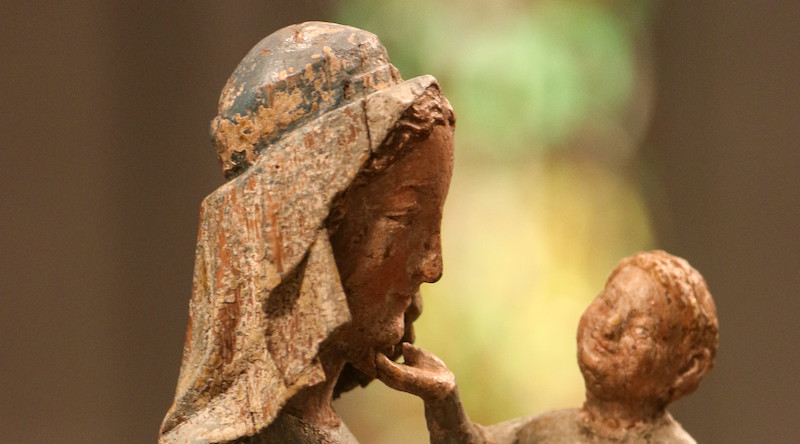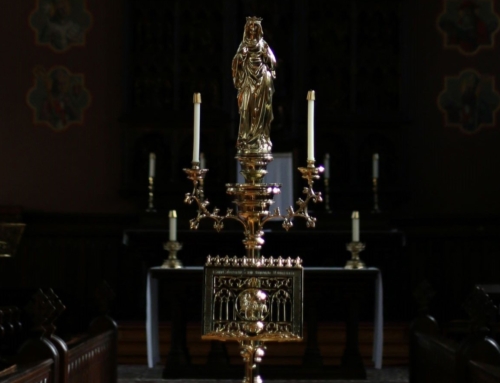While it is well known that May is “Mary’s month,” several other months carry a particular Marian character. September is one of them, dedicated to her Seven Sorrows, crowned by three feasts in rapid succession: the Nativity of the Blessed Virgin Mary (Sep 8), the Most Holy Name of Mary (Sep 12), and Our Lady of Sorrows (Sep 15).
As we celebrate Mary’s Most Holy Name, today’s entrance antiphon reads “Blessed are you, O Virgin Mary, by the Lord God Most High, above all women on the earth; for he has so exalted your name that your praise shall be undying on our lips.” This feast was established in honor of Mary after the Christian monarch John III Sobieski saved the city of Vienna from destruction on September 12, 1683, having entrusted his army to the care of Our Lady of Czestochowa.
Why go to Mary for help in our lives (let alone help in our armies)? After all, Sobieski told the Pope, modifying Caesar’s famous phrase, “Veni, vidi, Deus vicit”—“I came, I saw, God conquered.” Why “to Jesus through Mary,” and not just to Jesus? Truly, this is a mystery of God’s love, a free choice that gave him delight. In this mystery, God chose that “a virgin would conceive and bear a son” (Matt 1:23, cf. Isa 7:14). God chose to send “the angel Gabriel . . . to a city of Galilee called Nazareth” (Luke 1:27). God chose that “the Word became flesh and dwelt among us” (John 1:14). God chose that the Blessed Virgin Mary would play a role in our salvation won by Christ. Because of this, the Church has always chosen to trust in Mary’s intercession.
“What the Catholic faith believes about Mary is based on what it believes about Christ, and what it teaches about Mary illumines in turn its faith in Christ” (CCC 487). This principle is clearly seen in today’s celebration of Mary, which mirrors the feast of the Most Holy Name of Jesus. Just as God “bestowed on [Jesus] the name which is above every name,” Mary says in her praise of God that “all generations will call me blessed . . .” (Phil 2:9, Luke 1:48). Our devotion to Mary and the exultation of her name leads to praise of Christ. Mary herself models this: “. . .the Almighty has done great things for me, and holy is his Name” (Luke 1:49).
In one of Saint Dominic’s favorite hymns, the Ave Maris Stella, we praise Mary’s exalted name and pray that she will “prepare for us a safe way so that seeing Jesus, we may always rejoice.” Mary brings us to her son. And truly, if we wish to be near Christ, we will by necessity need to be close to his mother, for no one has, or ever will be, closer to Christ than Mary, as taught by Aquinas (ST III, q. 27, a. 5). Our Lady is in heaven. This is why we run to her in hope. She is close to her Son. She whom God chose, God chooses still. Let us run to the Blessed Virgin, “for never was it known that anyone who fled to thy protection, implored thy help, or sought thine intercession was left unaided. Inspired by this confidence, we fly unto thee, O Virgin of virgins, our mother; to thee do we come, before thee we stand, sinful and sorrowful. O Mother of the Word Incarnate, despise not our petitions, but in thy mercy hear and answer us.”
“And the Virgin’s name was Mary” (Luke 1:27).
✠
Photo by Fr. Lawrence Lew, O.P. (used with permission)







